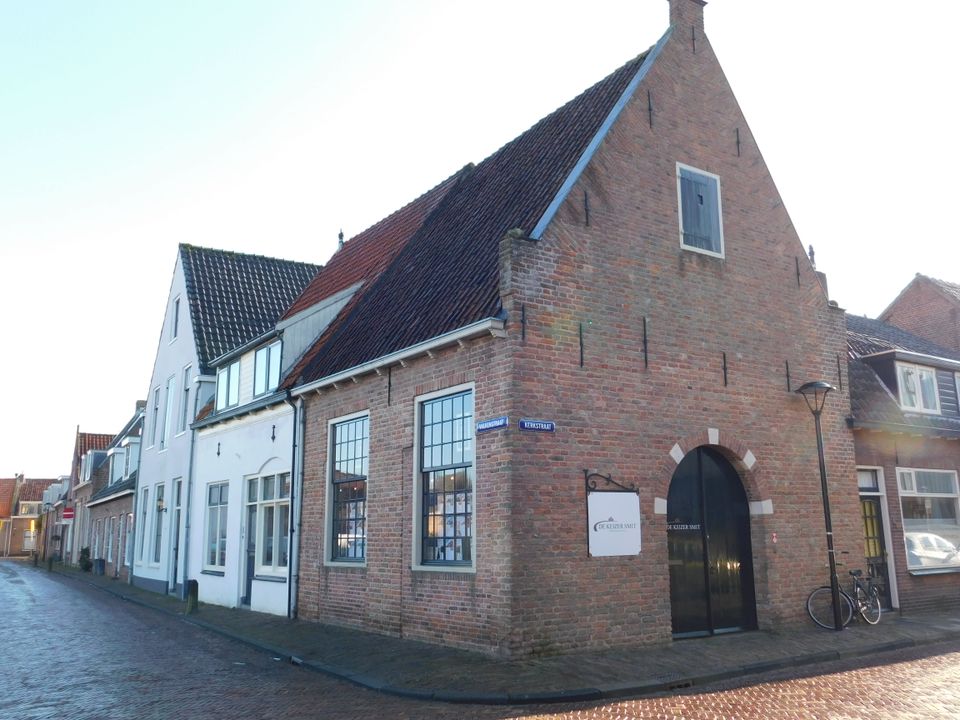
Opposite the guesthouse chapel, at Kerkstraat no. 2, lies the former Vianen weigh-house. The 17th Century building was restored between 1975 and 1976 and is a registered national monument. Despite the age of the weigh-house, almost nothing is known about its history. The building is mentioned in an 1822 document as a weigh-house, but when the weigh-house was built there and how long Vianen had a weigh-house is unknown.
From the Middle Ages onwards, a weigh-house was an important building in a to…
Opposite the guesthouse chapel, at Kerkstraat no. 2, lies the former Vianen weigh-house. The 17th Century building was restored between 1975 and 1976 and is a registered national monument. Despite the age of the weigh-house, almost nothing is known about its history. The building is mentioned in an 1822 document as a weigh-house, but when the weigh-house was built there and how long Vianen had a weigh-house is unknown.
From the Middle Ages onwards, a weigh-house was an important building in a town. The right to operate a weigh-house, just like the right to justice and the right to urban defence works, was one of the town rights that were granted in the Middle Ages. Goods were weighed out at the weigh-house. Traders in products such as butter and cheese were required to have them weighed in the town’s weigh-house. It served as a reliable trading centre for the town. As well as promoting fair trade, weigh-houses were also a source of income for town governments. Traders had to pay a fee for weighing, a kind of tax on weighing.
Further reading: Vianen town hall, The horse, Vianen town centre, Former cantonal court/Anduspand, Town wall and town canal, Guesthouse chapel.
